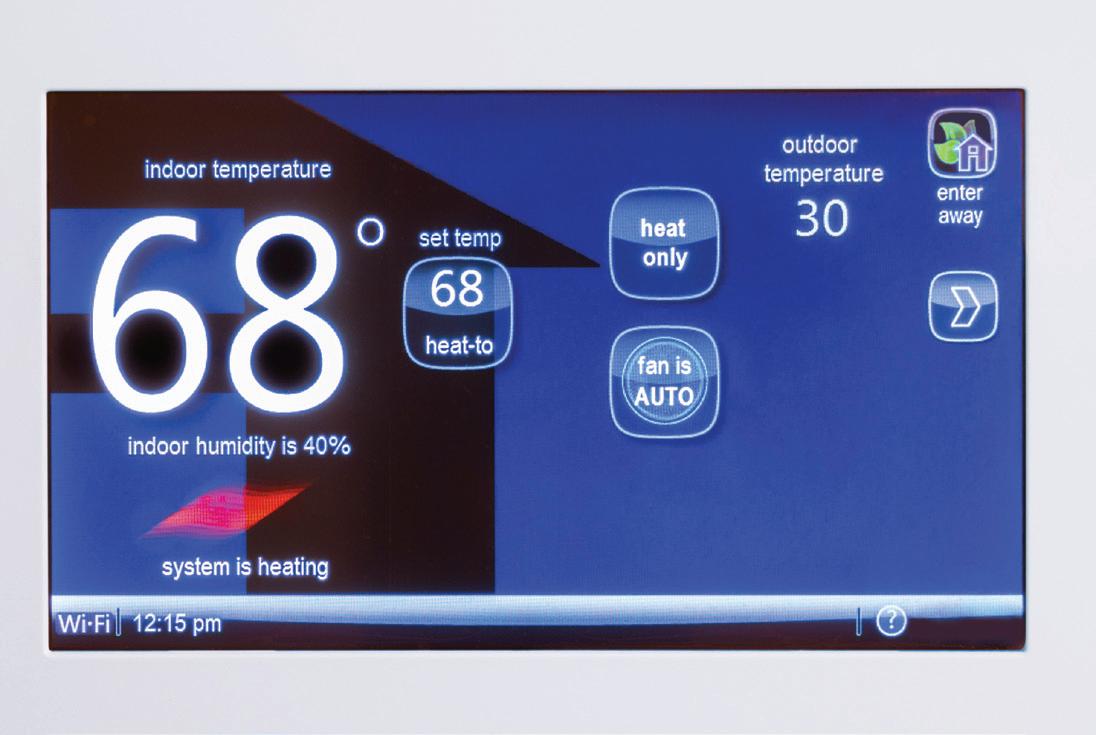
























































Keeping the lights on at a cost you can afford is the focal point of everything our Louisiana electric cooperatives do. Transparency is one of our core values, so in addition to sharing co-op successes, I believe we also have a responsibility to tell you about the challenges.
In May, the U.S. Environmental Protection Agency issued a rule that impacts energy production from power plants. The power plant rule will undoubtedly threaten access to reliable electricity for our local community and communities across the country.
The rule constrains existing coal and new natural gas plants by requiring them to install carbon capture and storage—a technology that has potential but has not been proven to be viable as required. No power plant in North America uses CCS at the scale and levels mandated by EPA. When power plants aren’t able to comply with EPA’s CCS requirements, they are required to shut down, significantly limit operations or switch fuels. These unrealistic standards force the unnecessary and early shutdown of many power plants that provide reliable electricity 24/7.
Renewable sources, such as solar and water, are important components of our overall generation mix. However, given the intermittent nature of these energy sources, we simply cannot depend on them—because the sun doesn’t always shine, and water levels
in our tributaries vary depending on flooding and droughts. The need for always-available power-generating resources is still essential.

The timing of the power plant rule is equally troubling. At the same time the EPA is leading our nation down the path to fewer power plants, utilities are facing a surge in electricity demand, driven by the onshoring of manufacturing, the growth of the American economy and the rapid expansion of data centers to support artificial intelligence, e-commerce and cryptocurrency.
Many states have already experienced rolling outages. If the EPA’s power plant rule further threatens the supply of electricity, the problem will only get worse. In fact, the North American Electric Reliability Corp., the nation’s electric reliability watchdog, recently forecasted that over the next five years, all or parts of 19 states are at high risk of rolling power outages during normal peak electricity demand conditions.
It’s no secret that when demand is high and supply is low, costs go up. We’re concerned about threats to reliability as well as cost increases to our members.
CEO Addie Armato
SAFETY COORDINATORS Ricky Melancon Derek Seal
COMMUNICATIONS AND DIGITAL MARKETING
SPECIALIST Conley Bourgeois
ADMINISTRATIVE ASSISTANT Rhianna Garon
CREDIT UNION
Tanya Carroll, manager
Jody Overhultz, representative
Board of Directors
President Michael Heinen
Vice President Roger Dale DeHart
Secretary/Treasurer Richard Sitman
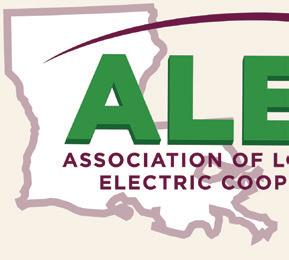

BEAUREGARD
Trent Buxton Kevin Turner
CLAIBORNE
Mike Marcotte Lane Davidson
DEMCO
Daniel Berthelot Richard “Dickie” Sitman
JEFF DAVIS ELECTRIC COOPERATIVE INC.
Michael Heinen Byron Hardee SOUTH LOUISIANA
Trevor Benoit Roger Dale DeHart
WASHINGTONST.
Joe Jarrell Dennis Glass
Associate Member

I don’t say all of this to worry you, but I do want our members to understand the challenges that lie ahead. Just as we’ve always done, we will look for solutions that serve our members best. We are joining electric co-ops across the country to fight these regulations, and we are working with our local elected officials to help them understand the consequences this could have on all Louisiana residents and businesses.
Co-ops are no strangers to innovation, and we’re taking proactive steps to address today’s energy challenges and tomorrow’s energy needs. We’ve led the charge on industry endeavors such as community solar projects, and we’ll continue to explore new technologies and strategies that bolster reliability and our local grid.
Electric cooperatives, like the member cooperatives of the Association of Louisiana Electric Cooperatives, deliver power to 42 million Americans. At the end of the day, our priority is to meet our members’ energy needs, and we must have reliable electricity available to do that.
If you’re interested in learning more about policy impacts on power reliability or to make your voice heard on this matter, visit voicesforcooperativepower.com. We also encourage you to exercise your right to vote this election season.
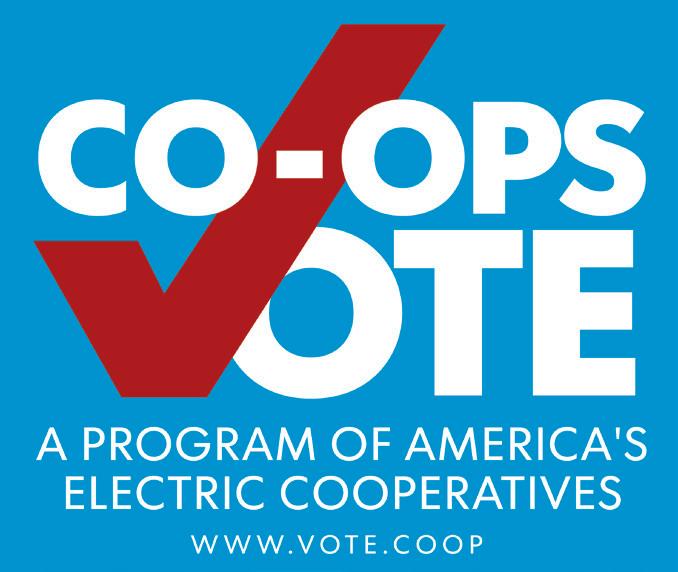


BOARD OF DIRECTORS
ASCENSION
Elinda Taillon
EAST BATON ROUGE
Steve Irving
Randy Lorio, Vice President
Jill McGraw
EAST FELICIANA
Mike Anderson
Glenn DeLee
LIVINGSTON
Danny Berthelot, President
Leslie Falks
Dennis Lott, Secretary-Treasurer
ST. HELENA
Tresa Byrd
Richard Sitman
TANGIPAHOA
Melissa Dufreche
WEST FELICIANA
Kevin Beauchamp
CEO & GENERAL MANAGER
Randy Pierce
CHIEF CORPORATE SERVICES OFFICER
Russchelle Overhultz, CEBS
CHIEF ENGINEERING & OPERATIONS OFFICER
Mark Phillips
CHIEF FINANCIAL OFFICER
Peggy Maranan
CHIEF MEMBER SERVICES OFFICER
Galen Dunbar
CHIEF STRATEGY & REGULATORY OFFICER
Jeff Andry
Volume 39, Issue 5
Mission
DEMCO is focused on enhancing the quality of life for members by providing safe, reliable and competitively priced energy services.
Along These Lines (USPS 4089) is published bimonthly by the Association of Louisiana Electric Co-ops Inc., 10725 Airline Hwy., Baton Rouge, LA 70816, in partnership with Pioneer Utility Resources.
Annual Subscriptions: Members $2.18. Nonmembers $5.
Postmaster: Send form 3579 to 10725 Airline Hwy., Baton Rouge, LA 70816.
Periodicals postage paid at Baton Rouge, Louisiana 70821 and additional mailing offices. DEMCO is an equal opportunity provider and employer.


Randy Pierce CEO & General Manager

Dear DEMCO Members,
I want to take a moment to reflect on how we at DEMCO prioritize communication with you—our valued members.
During significant weather, DEMCO is dedicated to keeping you informed in real-time through various channels such as social media, email, DEMCO.org and local news outlets.
We understand the importance of timely updates during these critical moments, ensuring you have the information you need for your family and business.
Equally important are our planned outages. These are scheduled to perform essential maintenance, upgrades or other necessary work in your neighborhood. It’s part of our commitment to transparency and reliability that we notify you in advance of any planned outage. You’ll receive notifications via automated phone calls, emails, MyDEMCO timeline messages and texts, ensuring you are informed and prepared.
Your accurate contact information is crucial for effective communication. Please take a moment to update or register your details in your MyDEMCO account. This small step ensures we can reach you promptly with updates on your electric service.
Behind every outage notification is a team working tirelessly to minimize disruption and restore service quickly and safely. We understand the inconvenience outages can cause, and we appreciate your understanding and


closed for MONDAY, SEPTEMBER 2

Whether through our website, your tablet or the MyDEMCO app on your smartphone, you can manage your account, view and pay your bill, report service issues, receive key notices and monitor your electric usage in real time.






Take control like never before with enhanced features that make managing your account easy through DEMCO.org, your smartphone or tablet (Android or iOS).
REGISTER TODAY and put powerful account management in your hands.

today at DEMCO.org

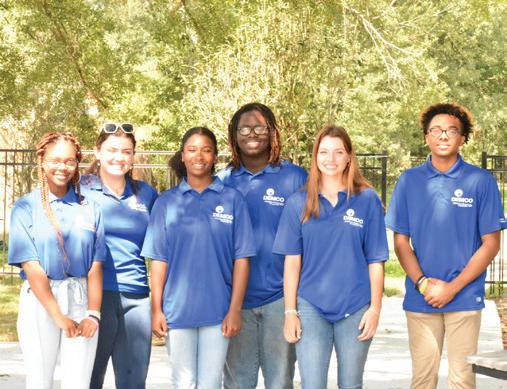
The Louisiana Member Services Association and Association of Louisiana Electric Cooperatives recognizes cooperative employees and their families for the volunteer work they do in their communities. This year, LMSA members decided to permanently rename two awards, one for a cooperative and one for an individual, as the Kevin Reeves Cooperative Spirit Award after a beloved cooperative employee.
Kevin spent his 33-year career at Beauregard Electric Cooperative. He was a friend to many in the industry, and he truly lived a life marked by selfless service and boundless love. Kevin’s unexpected death in June 2023 left a profound void in his family, church, community and electric cooperatives across the country. Kevin’s life was a direct reflection of everything the awards program symbolizes, and no one deserves to be the namesake of these awards more.
This year’s nominees:
Starla Pruitt, BECi. Starla runs races for benefits, fundraisers and several nonprofit organizations. Since 2018, she has competed in more than 20 races, from 5Ks to half-marathons, bringing awareness to multiple causes.
Candy Hardy, Claiborne Electric Cooperative. As a court-appointed special advocate, Candy fights for the best interest of children who have been removed from their homes by the Department of Children and Family Services.
Cecil Garaudy, DEMCO. Cecil travels to various fundraisers and volunteer opportunities with his 20-year-old African sulcata tortoise, Thomas. Cecil and Thomas are an audience favorite at their public outings, where they raise awareness and funding for various causes.
Tina Diehl, Jeff Davis Electric Cooperative. Tina provides

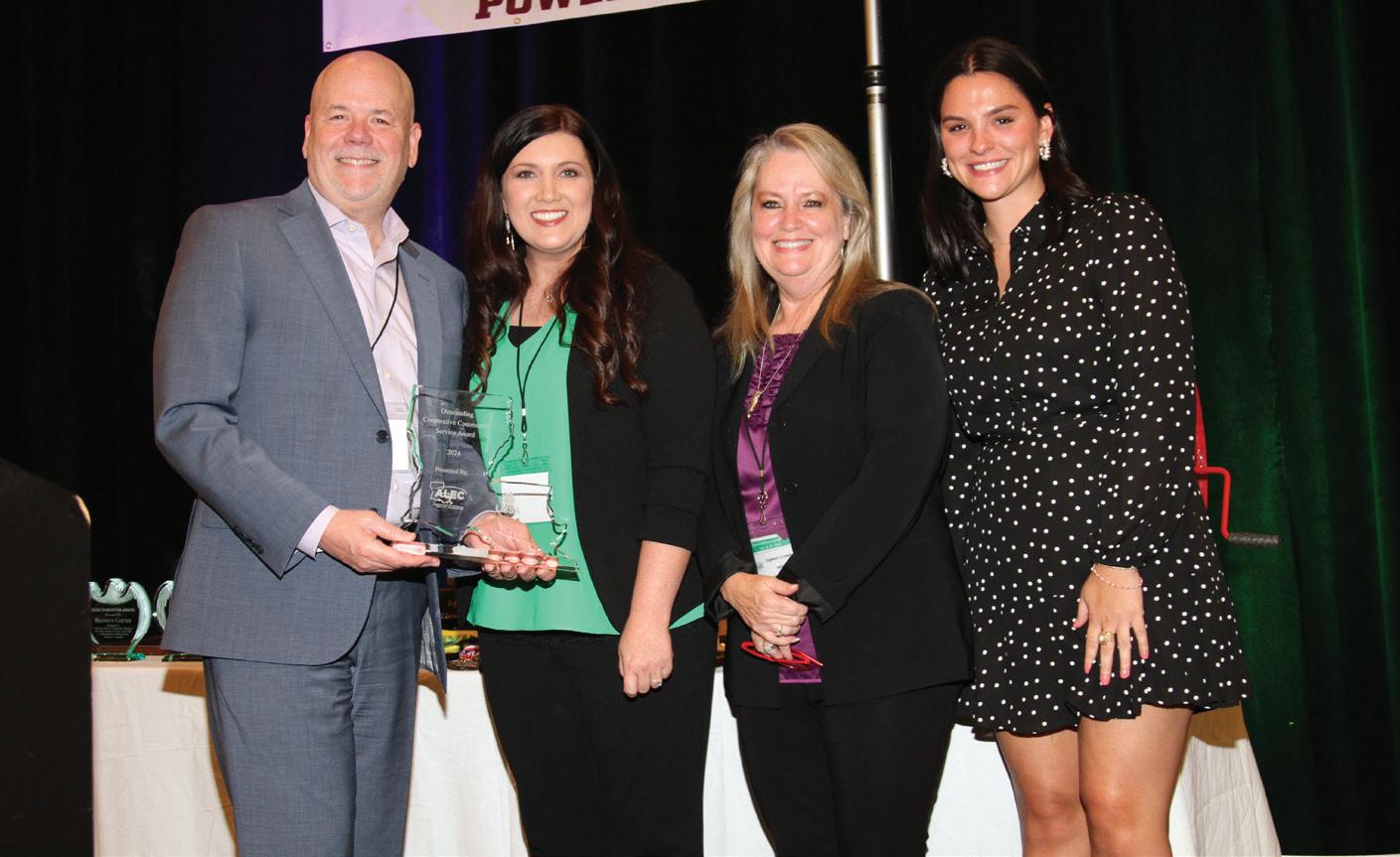
communications services for The Catholic Daughters of the Americas, an organization that collects new or gently used shoes for countries in need. In 2022, the group collected nearly 4,000 pairs of shoes.
William Howell, Washington-St. Tammany Electric Cooperative. William volunteers with the Liars and Lunkers free fishing tournament, which was founded
by his father and uncle. The event introduces children to the world of fishing as an alternative to drugs.
Candy Hardy was named the winner of the individual Kevin Reeves Cooperative Spirit Award.
Additionally, WSTE won the co-op award for its community project “Team Up To Clean Up/Love the Boot.” n
At the 2024 Association of Louisiana Electric Cooperatives Awards and Safety Banquet in July, cooperatives and individuals were celebrated for their accomplishments throughout the year.
ALEC provides many services to its member cooperatives, but the most beneficial and impactful offerings are the safety and training programs. Cooperative employees work in dangerous environments every day, and ALEC’s goal is to train them to do their jobs safely.
“The safety and training programs that ALEC provides are vital to our co-ops,” says Derek Seal, ALEC safety coordinator. “They ensure all co-ops are up to date on new strategies and compliant with OSHA guidelines.”
ALEC employees, with the help of toptier line professional representatives from all Louisiana co-ops, ensure all apprentices and lineworkers get the best knowledge and safe practices to be the best at what they do daily.
ALEC member cooperatives can participate in the Rural Electric Safety Achievement Program, which requires rigorous safety inspections every three years by a certified team of loss-control professionals that inspect everything from plant and equipment to employee procedures.
This year, DEMCO and WSTE completed the RESAP inspection and received a flag to display at their headquarters.
ALEC member cooperatives that have worked without a lost-time accident are given plaques in recognition of their achievements. The recipients were:
• Jeff Davis Electric Cooperative, in recognition of working more than 752,191 work hours without a lost-time accident since January 2017.
• South Louisiana Electric Cooperative Association, in recognition of working more than 4,570,467 work hours without a lost-time accident since December 1996.
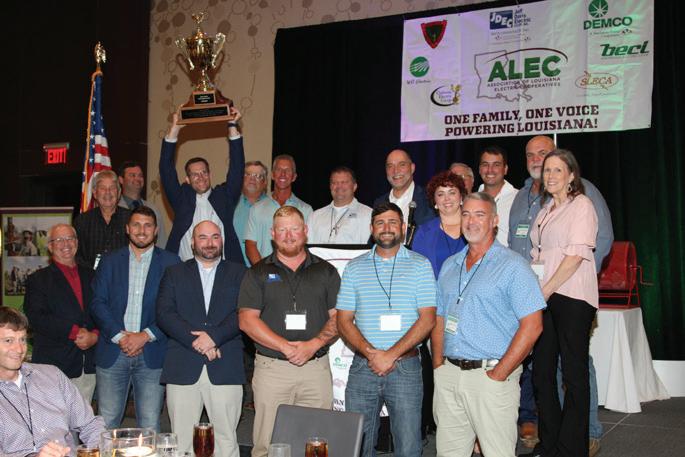
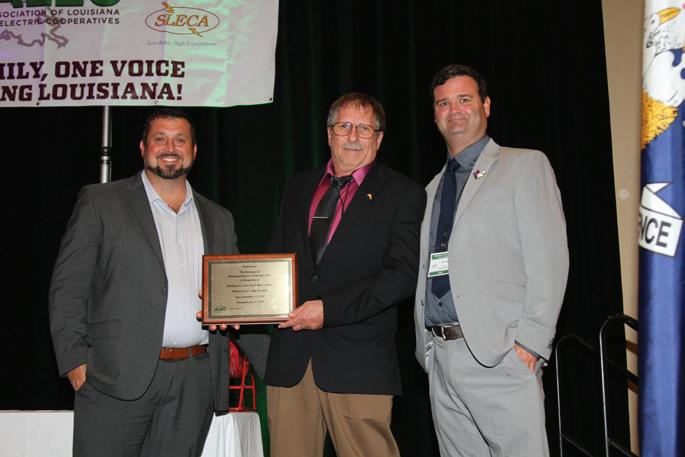
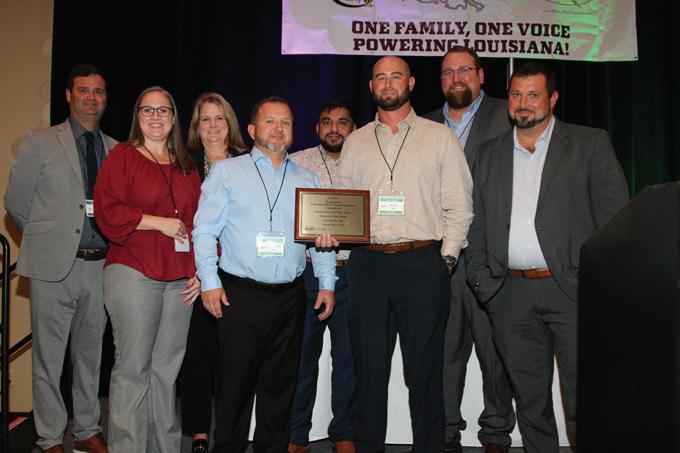
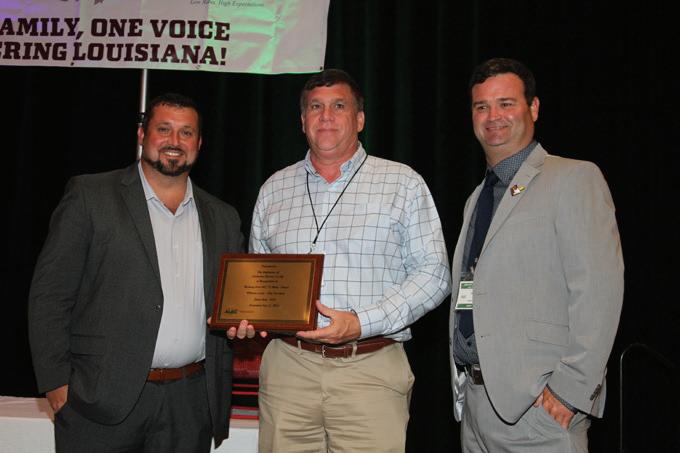
• Beauregard Electric Cooperative, in recognition of working 428,248.70 work hours without a lost-time accident since November 2022.
• Claiborne Electric Cooperative, in recognition of working more than 691,711 work hours without a lost-time accident since June 2019.
The Traveling Statewide Safety Award is always the last presentation. A special formula is used to determine the winner, incorporating employees’ incidents, incident severity, hours worked and vehicle accidents.
Jeff Davis Electric received the prestigious statewide safety trophy for the second year in a row.
ALEC commends all member cooperatives for their achievements and continued commitment to safety. n
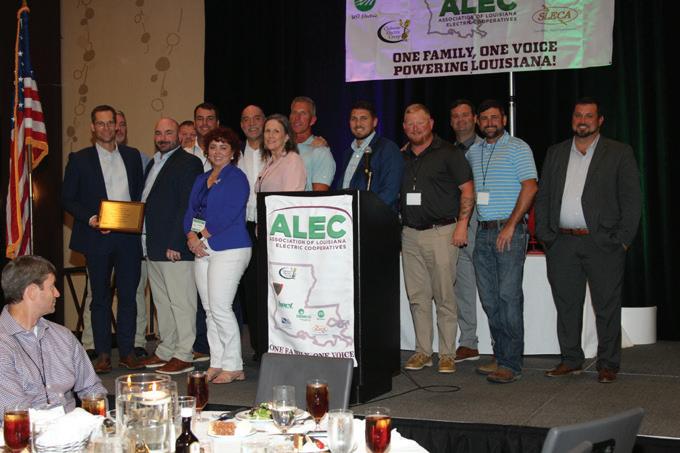
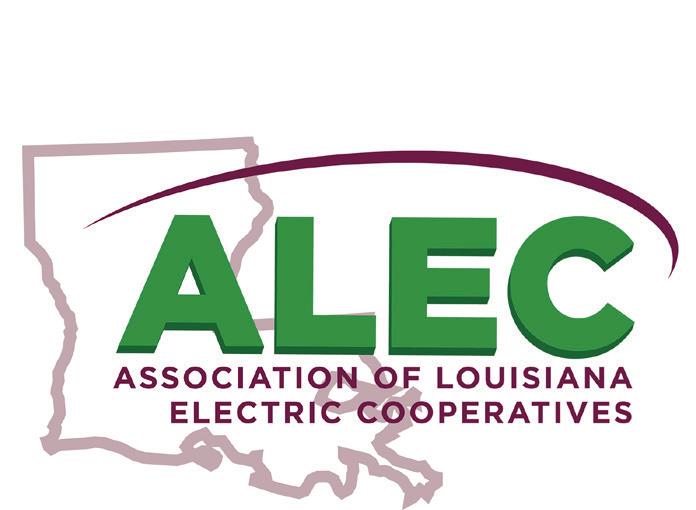

The surge in popularity of solar power systems has been remarkable and is driven by the promise of lower energy bills, environmental sustainability and potential tax incentives. However, this rapid growth has also attracted unscrupulous actors looking to exploit consumers.
As more homeowners and businesses consider adding solar energy, it’s crucial to be aware of the potential for scams, schemes and fraud. With the influx of solar providers, distinguishing trustworthy companies from shady ones can be challenging.
Investing in solar energy may provide benefits, but it’s essential to approach this decision with caution. By being vigilant and conducting thorough research, you can protect yourself from scams and ensure a positive experience with solar power. Remember, a reputable solar company will prioritize your satisfaction and long-term success over making a quick profit.
• High-Pressure Sales Tactics: Be wary of sales representatives who pressure you into making a quick decision or signing a contract immediately. Reputable companies will give you time to research and make an informed decision.
• Unrealistic Promises: If a deal sounds too good to be true, it probably is. Promises of extremely low costs or unrealistically high energy savings should be approached with caution.
• Lack of Credentials: Trustworthy solar providers will have proper licensing, certifications and insurance. Always verify these credentials before committing to a company.
• Opaque Pricing: Avoid companies that are vague about pricing or offer confusing contracts. A legitimate company will provide a clear, detailed estimate of costs, including installation, equipment and maintenance.
• Negative Reviews: A history of complaints or negative feedback is a strong indicator to steer clear. Research the company’s reputation by reading online reviews and checking with the Better Business Bureau.
• Do your research. Research different solar companies in your area. Look for reviews, testimonials and case studies. Check with consumer protection agencies and industry associations for any reports of scams or fraud.
• Get multiple quotes. Obtain quotes from several solar providers to gain insight into the market rate and help you identify outliers.
• Verify credentials. Ensure the company you choose is licensed, certified and insured. Look for affiliations with reputable industry organizations, such as the Solar Energy Industries Association.
• Ask questions. Ask questions about the installation process, warranties, maintenance and the company’s experience. A trustworthy company will be transparent and willing to address your concerns.
• Read the fine print. Carefully review any contracts or agreements before signing. Make sure you understand all terms and conditions, and seek legal advice if necessary.
|



































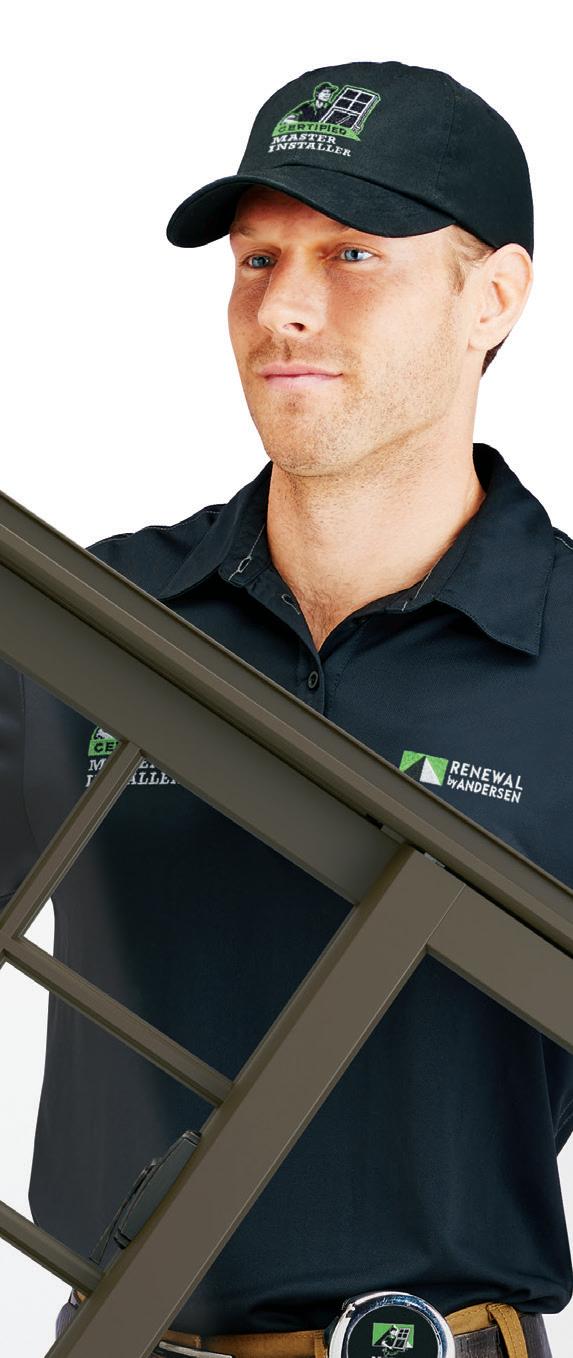








































Story and photos by John N. Felsher









Well known for producing giant speckled trout, the Calcasieu Estuary south of Lake Charles offers anglers more to catch.
Calcasieu Lake, locally known as Big Lake, runs about 12 miles long by 9 miles wide and covers roughly 50,000 acres. The Calcasieu Ship Channel runs 40 miles from Calcasieu Pass on the Gulf of Mexico to Lake Charles, connecting Big Lake and other water bodies.

To the west, the Sabine River flows down the Louisiana-Texas line into Sabine Lake. Sabine Lake spreads across 45,320 acres. At the south end, Sabine Pass connects the lake to the gulf.
The Gulf Intracoastal Waterway connects the Calcasieu Ship Channel to Sabine River. A vast brackish marsh provides outstanding angling opportunities for multiple fish species between the two major lakes from the GIWW south to the gulf.
Sabine National Wildlife Refuge conserves nearly 125,000 acres of this pristine wilderness punctuated by numerous impoundments, bayous, canals and ponds. In the marshes between the lakes, anglers can catch anything that swims in Louisiana waters.
Fresh water from the Sabine and Neches rivers pours into the northwestern portion of the marshes, where it mixes with salty




water coming from the gulf through the passes. On the eastern side, fresh water pours down the Calcasieu River into the northern part of the Calcasieu Estuary.
The blurred demarcation between the two environments blends and moves constantly as river flow, tides and wind battle for dominance. This fertile mixing of sweet and saline worlds creates a piscatorial gumbo, providing homes to a multitude of diverse species.
Predators feast upon the best forage from both worlds. Bass, redfish, trout and flounder gorge themselves on a rich smorgasbord of aquatic and marine morsels such as threadfin shad, crawfish, bream, crabs, shrimp, cocahoe minnows, menhaden, known locally as pogies, mullets, croakers and uncountable other creatures.
Largemouth bass can tolerate salinity up to about 10 parts per thousand. Blue catfish can tolerate salinity better than most other freshwater species. Redfish and flounder can live in pure, fresh water. Most other salty species tolerate varying salinity levels. On any day, the catch might include these fish, plus speckled trout, white trout, black drum, sheepshead, several bream species, crappie, fresh and saltwater catfish and others.
“Many diverse species hang out all together in the same places,” says Tom Adams Jr. of Fishing Tom Guide Service in Sulphur. “It’s not too salty for freshwater species, and it’s salty enough for many saltwater species. We might catch 15 or more different species in one day.”
What one catches in a particular spot at any given time depends upon salinity levels at that spot, which can sometimes fluctuate hourly. Anglers might catch mostly bass from one spot early in the morning or some redfish and flounder. Later in the day, they might catch mostly speckled trout in the same spot with the same baits.
“Most bass in the marsh average about 1 to 2 pounds, but anglers specifically targeting bass sometimes catch 5- to 6-pounders,” Tom says. “In some bass club tournaments, anglers have caught bass in the 8- to 10-pound range.”
Nothing ignites a multispecies feeding frenzy like a fall crustacean migration. After a good cold snap, white shrimp leave the estuaries to head for deeper waters. As shrimp move, everything follows. No predator will refuse a shrimp snack. Largemouth regularly hit live shrimp or soft-plastic shrimp imitations, such as Vudu, D.O.A. or Gulp!, fished under a popping cork.

“Bass absolutely love live shrimp,” Tom advises. “In September and into the fall, we fish grass lines with live shrimp under a popping cork for both bass and redfish. For redfish, I like to work the main bayou shorelines. I look for flowing water. We also catch many flounder in the same places, especially in the fall.”

Black Bayou flows through the northwestern portion of those marshes and provides excellent fishing opportunities for varied species. Multiple small tributaries feed into the bayou. During a falling tide, dropping water levels pull baitfish, shrimp, minnows and crabs from the marshes and ponds into deeper water. Bass, redfish, flounder and other species wait at the mouths of small drains to ambush anything washing out with the tide.
“Black Bayou can produce excellent action,” Tom says. “It usually has moving water. The bayou averages about 8 to 10 feet deep, but some holes drop to 14 feet deep. Redfish like to hang out in the holes as water temperatures cool in the fall.”
In the drains, many anglers fish live shrimp, or a soft-plastic shrimp imitation, under a popping cork. Toss the cork as far up the drain as possible. Let the tide carry the cork naturally downstream. Use the reel only to take up slack and keep the bait in the flow.
Anglers can also fish the Vinton Drainage Ditch, which crosses the Intracoastal and merges into Black Bayou. The East Cut connects the north end of Sabine Lake to Black Bayou.
“Trout action depends largely on salinity levels,” Tom says. “We usually find specks closer to Sabine Lake. In the marshes, trout average about 12- to 15-inches long, but it’s not uncommon to catch a limit of 15-inch trout, especially in the fall.”
Closer to the Calcasieu side, the Black Lake area produces great fishing action for trout and other salty species. The Salt Ditch runs from the GIWW to the Black Lake area and regularly produces good trout action. Kelso Bayou connects Black Lake to the Calcasieu Ship Channel. People can fish off the bank along Highway 27.
“The waters around Black Lake are very good for redfish, trout, flounder and other saltwater species,” Tom says. “In the marshes, we never know what might grab the line, especially when we put a live shrimp on a hook. It’s always a surprise what we bring in. That’s what makes fishing this area so exciting!”
For information on Sabine National Wildlife Refuge, visit www.fws.gov/refuge/sabine. For area information, go to www.visitlakecharles.org.
To reach Fishing Tom Guide Service in Sulphur, call 318-675-9114 or go to www.fishingtom.net.


Voting is one of the most powerful ways to make your voice heard in our democracy, but in 2020, only 66.8% of the voting-age population in the United States reported voting.
Modern technology has improved access to information on candidates and made it easier to register to vote in many areas, and it is vital to be aware of how you can participate in the 2024 election cycle.
Permanent absentee / mail-in voting procedures:
Excuse required to request an absentee ballot Applications can be submitted via mail, in-person, email, fax, and online
Early Voting Begins: October 22, 2024
Early Voting Ends: October 29, 2024 WHY SHOULD YOU
VOTER REGISTRATION DEADLINE: October 6, 2024
30 days before an election; 20 days before if registering online.
ABSENTEE / MAIL-IN VOTING
BALLOT DEADLINES:
Request must be received by
November 1, 2024
4 days before the election at 4:30 p.m.
To register to vote in Louisiana, visit the State Board of Elections website for more information on voter eligibility and the registration process.
BALLOT SUBMISSION DEADLINE:
All absentee ballots, regardless of return method, must be received the day before the election.
You can begin the registration process through Louisiana’s Online Voter Registration System.







Committee for Rural Electrification® (ACRE®) to electric cooperatives in their local just that.
action committee (PAC), and it continues to to electric co -ops.

it’s impo rtant that candidates who receive the PAC and the electric cooperative conduct research to ensure electric co -ops research and discussions with individuals that many of today’s political candidates
An effort to support policymakers and initiatives that further the cooperative mission received a fresh name last year: America’s Electric Cooperatives PAC. As it goes into its first presidential election season, the organization continues a mission that began nearly six decades ago.
for our PAC: America’s Electric Cooperatives

A political action committee, or PAC, allows donors to support political candidates. Thousands of donors have contributed to the America’s Electric Cooperatives PAC, according to the National Rural Electric Cooperative Association.
“The name change just makes sense,” says Gabe Snow, the PAC’s director. “If we’re going to have a large PAC, we need to make sure it’s identified appropriately to help ensure electric co-ops are recognized for our collective efforts.”
activities of the PAC under the well-known and resources, including the Voices for Cooperative recognizable brand that enhances our reputation. This electric co-ops is purposefully designed to elevate evidence that this approach is working well.

Discussions with individuals associated with federal politics and PAC donors found many of today’s political candidates did not connect ACRE with electric co-ops.
So, NRECA unveiled America’s Electric Cooperatives PAC last year, enabling the association to better connect PAC activities to the nation’s well-known and respected co-ops. The rebrand created an umbrella encompassing not only the PAC but also other advocacy resources, such as the Voices for Cooperative Power grassroots network.
That vision led to a name change for the PAC that began in 1966, when NRECA established the Action Committee for Rural Electrification, known as ACRE.
At the time, the use of acronyms to identify such groups was less common than it is today. Research supported by NRECA indicated co-ops did not receive full recognition for their collective efforts.
through personal dollars raised from co -op candidates, who if elected become

“The name America’s Electric Cooperatives PAC capitalizes on the fact that electric cooperatives are already held in high regard in Washington, D.C., through our collective advocacy efforts,” Gabe says. “It capitalizes on that brand and the reputation NRECA has as a strong bipartisan organization.”
A simple, straightforward PAC name is especially important in dealing with first-time federal candidates, Gabe says.
“Every two years, hundreds of congressional elections take place, and new candidates enter the field,” he says. “That constant churn happens over and over again, and it’s easy to get lost in the alphabet soup of acronyms in Washington.”
America’s Electric Cooperatives PAC allows electric co-ops to financially support federal candidates.
Funding: Funds include personal dollars raised from co-op leaders and consumer-members.
The goal: The PAC strives to ensure that candidates, if elected, become policymakers who connect the PAC with electric co-ops.
member co -ops and the feedback we’ve received to manage America’s Electric Cooperatives at NRECA PowerXchange.
The details: America’s Electric Cooperatives PAC is nonpartisan, advocating for policies and legislation supporting our electric co-ops.
For more information or to donate, visit cooperative.com/pacdonation.


have a robust Voices for Cooperative Power op employee and consumer-member tap into thousands of cooperative CEOs and and regulatory advocacy teams at NRECA.

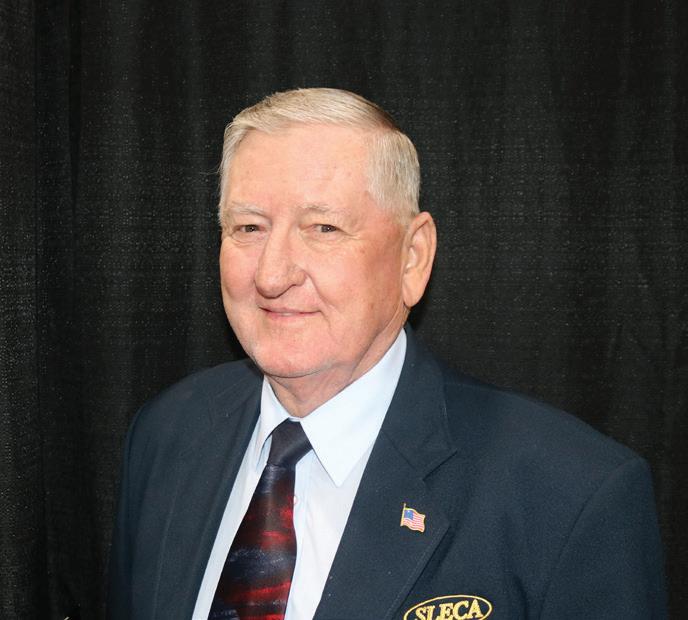

CLOCKWISE FROM ABOVE: Association of Louisiana Electric Cooperatives outgoing board president, Dennis Glass of Washington-St. Tammany Electric Cooperative, passes the gavel to the newly
Davis Electric Cooperative. Roger Dale DeHart of South Louisiana Electric Cooperative
vice president. The 2024-2025 secretary/treasurer is Richard Sitman of DEMCO.
New directors and officers announced
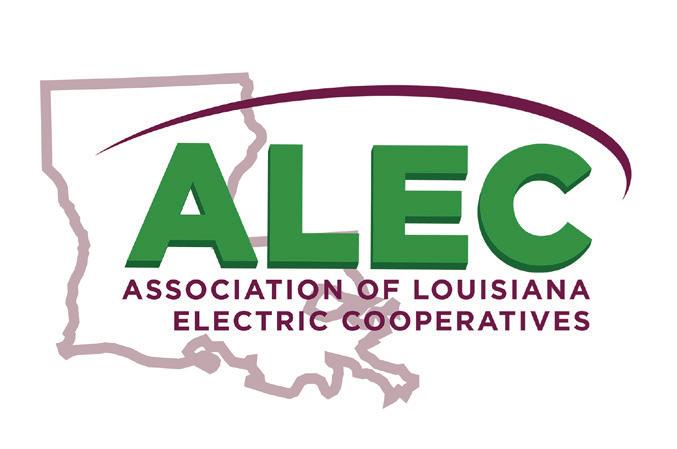
At the 2024 Association of Louisiana Electric Cooperatives Annual Meeting, the ALEC Board of Directors elected the following slate of officers for 20242025: President Mike Heinen, Jeff Davis Electric Cooperative; Vice President Roger Dale DeHart, South Louisiana Electric Cooperative Association; and Secretary/ Treasurer Richard Sitman, DEMCO.
“I am excited to continue to contribute to our cooperatives’ shared vision,” said Heinen. “We are well positioned to make a lasting impact on the communities we serve.”
Also appointed by their respective cooperatives to serve three-year terms as ALEC drectors are Mike Marcotte, Claiborne Electric; Dennis Glass,
Washington-St. Tammany Electric Cooperative; and Trent Buxton, Beauregard Electric Cooperative Inc.
“We are proud to announce our new board of directors and officers,” said ALEC CEO Addie Armato. “Our board of directors has been instrumental in providing our statewide organization with strategic guidance to better serve our cooperative members. We value their ideas and give them an equal voice at the table.”
Under the direction of the board, ALEC will continue to provide its members with innovative educational opportunities, award-winning magazines, safety and loss control programs, and a strong presence in both legislative and regulatory matters. n
Modern farming often relies on data and equipment with GPS and auto-guidance systems. However, even with these modern conveniences, farm workers must remain vigilant. That’s because farming is considered one of the most dangerous jobs.
Massive machinery is indispensable to farming, but the same impressive size, height and extensions make them particularly vulnerable to contacting power lines. That’s why staying alert, focused, and knowledgeable about potential hazards and safety procedures is crucial.
During a busy harvest season, the familiar sights around the farm can easily fade into the background, and farm workers can overlook the power lines overhead. However, failing to notice them can lead to deadly accidents.
Awareness of your surroundings around, above and below, as well as planning safe equipment routes can significantly reduce the risk of accidents. Even with GPS and auto steering, it’s imperative that farm workers keep a close eye on the equipment’s location and are ready to act if necessary.
Exposed underground power lines, defective wiring in farm buildings and extension cords are also hazards.
Grain bins can pose a potential danger as well. The National Electrical Safety Code requires power lines to be at least 18 feet above the highest point on any grain bin with which portable augers or other portable filling equipment are used.
If you plan to install new grain bins or you’re concerned about the proximity of power lines to existing grain bins, contact Escambia River Electric Cooperative.
To ensure a safe harvest season, SafeElectricity.org recommends the tips in the graphic below to avoid electrical accidents on the farm.
While rare, an equipment fire is the only reason to exit machinery that has come into contact with overhead lines. If it happens, jump off the equipment with your feet together. It’s critical you not touch the machinery and the ground at the same time. Then, still keeping your feet together, hop to safety as you leave the area. n































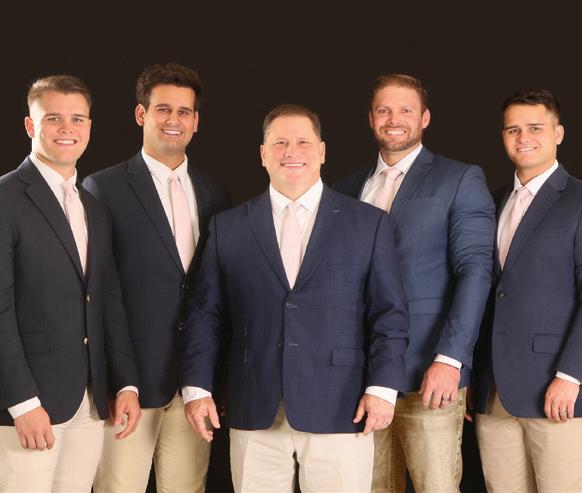


Maintaining access to meters and infrastructure is crucial to ensuring reliable service and safety for all DEMCO members. This involves inspecting meters, maintaining equipment, poles and power lines, and ensuring safe clearance around system infrastructure.
Consistent with DEMCO member bylaws and the Louisiana Public Service Commission requirements, the cooperative must have access to members’ properties to perform periodic visual inspections to maintain the system’s safety and reliability.
Locked gates can pose a significant challenge, but there are ways you can help facilitate this process.
Many DEMCO members secure their properties with locked gates for privacy and security.
While this is understandable, it can pose a significant challenge for the cooperative’s technicians. If they cannot access your meter, they cannot perform necessary inspections and readings, which can lead to estimated bills that may not reflect your actual use.
Here are a few ways you can ensure your meter is accessible while maintaining your security and privacy:
• Provide the Access Code: If your property is secured with a gate, consider providing DEMCO with the access code in your MyDEMCO account portal. Rest assured, any access information you provide the co-op will be handled with the utmost confidentiality and used only to gain access to co-op equipment.
• Install a Lockbox: You can install a lockbox on your gate and share the combination with DEMCO. This allows the co-op to access the meter without compromising the security of your property.
• Clear Obstacles: Ensure the area around your meter is free from overgrown vegetation, debris, and other obstacles that might impede access or obscure the meter. n
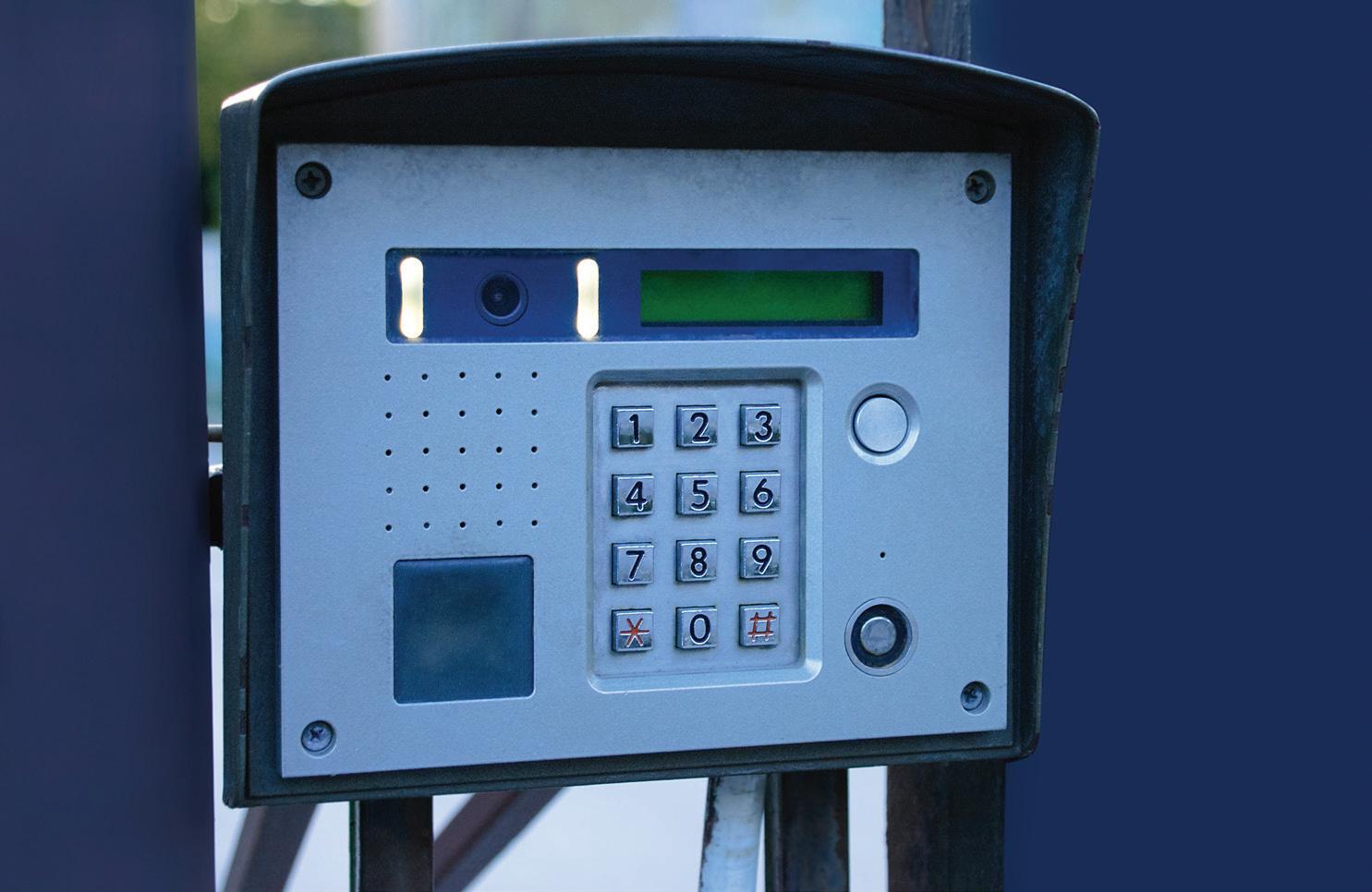
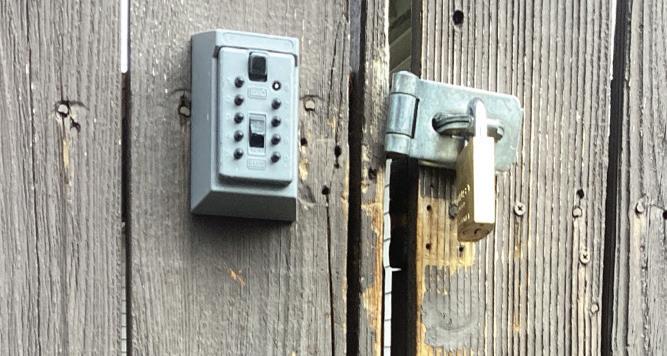
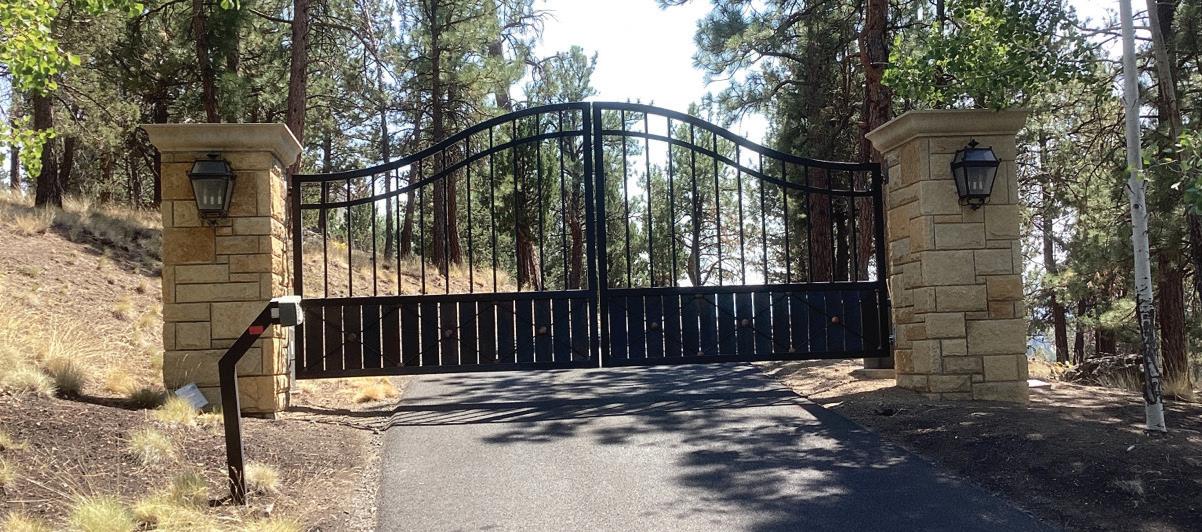

By Victoria Hampton



items your household may need in the event of a shelter-in-place or evacuation emergency. See a list of kit items on page 7.
Be prepared. These two words of advice can make all the difference when facing severe weather and natural disasters. While some severe weather events are seasonal, unpredictable conditions can cause natural disasters to strike any time of year. There is no better time than today to start planning for the next emergency in your community.


During National Preparedness Month, take steps to prepare for what Mother Nature has in store by creating an emergency plan. Emergency plans should account for multiple emergency scenarios. The plan should be developed, discussed and shared with all members of your household.
Take these steps to prepare your emergency plan:
Communicate. Because your family or roommates may not be together when a disaster strikes, make sure everyone knows how to contact one another and where to reconnect.
Discuss the types of disasters that are possible in your area and the different precautions for each. For example, wildfires have different evacuation levels, from 1 to 3. Hurricanes are defined by severity categories. Make sure everyone knows recommendations for sheltering in place and evacuation based on the severity of the natural disaster or storm.
While building your kit, consider the unique needs of each member of your household, such as medication, dietary restrictions, pet supplies and necessities for specific ages. Depending on the size of the household, an emergency kit may be one waterproof container or multiple bins.

If buying extra supplies for an emergency is not in the budget, start with what you already have at home. Collect items in one area to create a new storage spot. Use this nonperishable storage as an extension of your food pantry. Take and replace items after grocery shopping to avoid food waste, and keep the emergency kit stocked at all times. Consider adding additional, non-food items to your kit on a weekly or monthly basis, as finances allow. For emergency kit tasks listed in manageable weekly or monthly steps, search online for a disaster supplies and preparedness calendar.
Ensure the emergency kit is stored in a dry place that is easily accessible for shelter-in-place and evacuation emergencies, such as a garage or closet near the front door. If you leave home for work, make an emergency kit to keep in your vehicle or at your office. Keep in mind, sheltering in place may mean staying at work or a public place if you cannot safely return home.

Talk about how your family would respond to different types of emergencies. Document the plan and share it with each person in the household. Ready.gov offers an easy family emergency communication plan that can be filled out and exported into a shareable PDF.
Expand your emergency plan to include neighbors. Talk about emergency resources or tasks you may be able to share, how to help neighbors who have disabilities or are elderly and how you will communicate with them during a disaster.
Build an emergency kit. A crucial part of creating an emergency plan is building an emergency kit. Emergency kits consist of basic
Sign up for alerts. Finding up-to-date information during an emergency can be stressful. Set up access to emergency alerts beforehand to receive up-to-date information.
Check in with city or county offices of emergency management to sign up for emergency alerts. Signing up for these notifications allows emergency response agencies to text, call or email when a local emergency may require you to shelter in place or evacuate. Local emergency management may also have recommendations for additional alerts and online resources for the most common natural disasters in your area.
The Federal Emergency Management Agency mobile app offers alerts and resources before, during and after a disaster. Get severe



weather alerts for your area, find local evacuation shelters and disaster recovery centers, save custom emergency information, and receive safety and preparedness reminders. The app is available in English and Spanish. Download for free in the Google and Apple App stores on your smartphone.
Prepare for evacuation. While it may seem unthinkable to have to leave home during severe weather, many kinds of disasters can lead to evacuation. Sometimes there is a day or two to prepare. Other times, a life-threatening situation leads to immediate departure from home.

Prepare evacuation plans by identifying several places to go in an emergency, such as a friend’s house, nearby town or motel. Ask local emergency management about available shelter spaces, and include those options in your plans.


temporarily housed. For small pets, check hotel and shelter policies or ask friends about options at their homes. For large animals, check with local fairgrounds for shelter policies during emergencies, and research additional livestock evacuation locations.
In case of immediate evacuation or shelter-in-place orders when away from home, make sure pets and livestock are microchipped or tagged to expedite reunification efforts post-disaster.
During storm season, keep your vehicle’s gas tank as full as possible. Along with aiding in evacuation to a safer area, vehicles can be used as temporary shelters.

No one wants to deal with the stress and fear of a natural disaster. Yet having a plan for you and your family is the difference between a life-threatening situation and safely weathering the storm.
Choose a variety of locations in different directions. Some of your top choices may be affected by a storm or disaster.
For pets and livestock, identify places where they can be
Information for this article was sourced from the United States Department of Homeland Security. Visit ready.gov for free emergencyplanning resources.


An emergency kit is a collection of food, water and supplies that can sustain you and your family for multiple days. When building a kit, choose a waterproof container with a secure lid, such as a storage bin. An emergency kit could be one bin or several, depending on the number of people in your household.
This list is broken into basic items to start a kit and additional recommendations provided by the United States Department of Homeland Security.
At a minimum, your emergency kit should include the following items:
• Bottled water (1 gallon per person per day for several days).
• Nonperishable food.
• Battery-powered or hand-crank radio and a National Oceanic and Atmospheric Association weather radio with tone alert.
• Flashlight.
• First-aid kit.
• Extra batteries
• Whistle to signal for help.
• Dust mask to help filter contaminated air.
• Plastic sheeting and duct tape to shelter in place.
• Moist towelettes, garbage bags and plastic ties for personal sanitation.
• Wrench or pliers to turn off utilities.
• Manual can opener.
• Local maps.
• Cellphone with chargers and a backup battery.
• Pet food and water.
• Proper identification.
• A carrier or portable kennel.
• Collar and leash.
• Food and water bowls.
For additional recommended items to add to an emergency kit, visit ready.gov/kit.
Voting is one of the most powerful ways to make your voice heard in our democracy, but in 2020, only 66.8% of the voting-age population in the United States reported voting.
Modern technology has improved access to information on candidates and made it easier to register to vote in many areas, and it is vital to be aware of how you can participate in the 2024 election cycle.
Voting is one of the most powerful ways to make your voice heard in our democracy, but in 2020, only 66.8% of the voting-age population in the United States reported voting.
VOTER REGISTRATION DEADLINE: October 7, 2024
29 days before an election.
Voting is one of the most powerful ways to make your voice heard in our democracy, but in 2020, only 66.8% of the voting-age population in the United States reported voting.
ABSENTEE AND PROCEDURES
VOTER REGISTRATION DEADLINE: October 7, 2024
Modern technology has improved access to information on candidates and made it easier to register to vote in many areas, and it is vital to be aware of how you can participate in the 2024 election cycle.
29 days before an election.
Modern technology has improved access to information on candidates and made it easier to register to vote in many areas, and it is vital to be aware of how you can participate in the 2024 election cycle.
VOTER REGISTRATION DEADLINE:
October 7, 2024
29 days before an election.
VOTER REGISTRATION DEADLINE: October 6, 2024
FLORIDA’S ABSENTEE AND MAIL-IN VOTING PROCEDURES
FLORIDA’S
Request must be received by
ABSENTEE / MAIL-IN VOTING BALLOT DEADLINES: October 26, 2024
Permanent absentee / mail-in voting procedures:
As members of DEMCO and the larger network of America’s electric cooperatives, you are part of a powerful and influential community. This community’s strength lies not only in its ability to provide reliable energy but also in a collective voice, especially when it comes to voting in national elections.
or delivery by designee.
in-person,
VOTING
November 2, 2024 VOTE?
10 days before the election at 5 p.m.; election day at 7 p.m. if in-person or delivery by designee.
The power of the co-op vote is a testament to DEMCO’s commitment to democratic principles and the well-being of its communities.
• • No excuse required to request an absentee ballot Applications can be submitted via mail, in-person, email, fax, online and phone
LOUISIANA’S ABSENTEE AND MAIL-IN VOTING PROCEDURES
reminder or a bit of encouragement is all someone needs to get involved.
Request must be received by
ABSENTEE / MAIL-IN VOTING BALLOT DEADLINES: October 26, 2024
30 days before an election; 20 days before if registering online.
ABSENTEE / MAIL-IN VOTING BALLOT DEADLINES:
Request must be received by
October 26, 2024
Permanent absentee / mail-in voting procedures:
10 days before the election at 5 p.m.; election day at 7 p.m. if in-person or delivery by designee.
• Vote early or absentee. If you cannot make it to the polls on Election Day (Nov. 5), take advantage of early voting or absentee ballot options. Ensuring your vote is counted is paramount, regardless of how you cast it.
• • No excuse required to request an absentee ballot Applications can be submitted via mail, in-person, email, fax, online and phone
The Influence of Electric Cooperatives
Must be received by 7 p.m. on Election
FLORIDA’S EARLY VOTING DEADLINES
26, 2024
You
voting procedures: You can begin the registration process through Florida’s Online Voter Registration System.
The Co-op Commitment
ABSENTEE / MAIL-IN VOTING BALLOT DEADLINES: October 26, 2024 HTTPS://
Must be received by 7 p.m. on Election Day.
Mail Receipt by Election Day BALLOT SUBMISSION DEADLINE:
BALLOT SUBMISSION DEADLINE:
ABSENTEE / MAIL-IN VOTING BALLOT DEADLINES: November 1, 2024
10 days before the election at 5 p.m.; election day at 7 p.m. if in-person or delivery by designee.
Permanent absentee / mail-in voting procedures:
Early Voting Begins: October 26, 2024
Excuse required to request an absentee ballot Applications can be submitted via mail, in-person, email, fax, and online
Electric cooperatives serve more than 42 million Americans across 56% of the nation’s landmass. This expansive reach means your voting power can significantly influence election outcomes. When you vote, it ensures your needs and concerns are represented at the highest levels of government.
Request must be received by 4 days before the election at 4:30 p.m.
BALLOT SUBMISSION DEADLINE:
Must be received by 7 p.m. on Election Day.
DEMCO is committed to empowering its members through reliable electricity and active civic engagement. DEMCO believes an informed and engaged membership can drive positive change locally and nationally. Your vote is your voice. Together, members and DEMCO can amplify that voice to ensure the community’s needs are heard and addressed.
Early Voting Begins: October 26, 2024
Early Voting Ends: November 2, 2024
LOUISIANA’S EARLY VOTING DEADLINES
To register to vote in Florida, visit the State Board of Elections website for more information on voter eligibility and the registration process.
• • Early Voting Begins: October 22, 2024
Mail Receipt by Election Day
Early Voting Ends: November 2, 2024
• Register to vote. Ensure you are registered to vote well ahead of election deadlines. Check your registration status, especially if you have recently moved.
To register to vote in Florida, visit the State Board of Elections website for more information on voter eligibility and the registration process.
Early Voting Ends: October 29, 2024
• Stay informed. Educate yourself on the candidates and their positions on issues that affect your cooperative and community.
HTTPS://DOS.MYFLORIDA.COM/ ELECTIONS/
Must be received by 7 p.m. on Election Day.
Mail Receipt by Election Day
The power of the co-op vote cannot be overstated. As members of DEMCO and the broader network of America’s electric cooperatives, you have a unique opportunity to shape the future of our nation.
BALLOT SUBMISSION DEADLINE:
All absentee ballots, regardless of return method, must be received the day before the election.
To register to vote in Florida, visit the State Board of Elections website for more information on voter eligibility and the registration process.
You can begin the registration process through Florida’s Online Voter Registration System.
You can begin the registration process through Florida’s Online Voter Registration System.
HTTPS://DOS.MYFLORIDA.COM/ ELECTIONS/
HTTPS:// REGISTERTOVOTEFLORIDA.GOV/ ELIGIBILITYREACTIVE?REF=VOTEUSA
• Encourage others. Talk to family, friends and neighbors about the importance of voting. Sometimes, a
By voting, you uphold the democratic values that DEMCO was founded upon and ensure your voice contributes to the direction of the country’s policies and priorities. This election season, come together, get out the vote and demonstrate the true power of the cooperative community.
HTTPS://DOS.MYFLORIDA.COM/ ELECTIONS/
HTTPS:// REGISTERTOVOTEFLORIDA.GOV/ ELIGIBILITYREACTIVE?REF=VOTEUSA
https://vote.coop
HTTPS:// REGISTERTOVOTEFLORIDA.GOV/ ELIGIBILITYREACTIVE?REF=VOTEUSA
https://vote.coop
You can begin the registration process through Louisiana’s Online Voter Registration System.
It all started in 1978, when DEMCO pioneered Louisiana’s participation in the National Rural Electric Youth Tour by sending essay-winning students to Washington, D.C. In June, more than 2,000 youth delegates and chaperones from 44 states attended Youth Tour.
“We believe that students should see their nation’s capital up close, learn about the political process and interact with their elected officials,” says David Latona, DEMCO director of communications and governmental affairs.
While student groups are organized at the state level, they all come together for Youth Day, where they meet each other and hear featured speakers who provide insight into the important roles electric cooperatives play in their communities.
DEMCO’s chosen delegates share their 2024 Youth Tour experiences:
• “Thank you so much for sending me on this trip. My favorite part was the changing of the guard,” says Emily Doerr, of Zachary High School.
• “You have no idea how grateful I am for this trip,” says Delasya Guinn, of Central High School. “Meeting people I know will be lifelong friends, going places I’ve never been before and just being surrounded by a place that is so obviously rich with history has been one of the greatest experiences of my life. Thank you so much.”
• “I’ve had wonderful and life-changing experiences on this trip,” says Remy Boudreaux, of Central High School. “I’ve been able to experience monuments and museums, which I don’t think I would’ve ever seen if it weren’t for this trip. But now I have more motivation to push towards higher education and prospective jobs to make this singular trip turn into something I could go on more regularly. Thank you so much for this opportunity, and I will continue to make the most of it.”
• “Thank you for the opportunity to tour Washington, D.C.,” says Nicholas Wadsack, of West Feliciana High School. “It has been a wonderful experience.”
• “Thank you so much for this opportunity. I had such an amazing time,” says Halle Harrell, of Denham Springs High School.
• “Thank you so incredibly much for this wonderful opportunity to attend this trip,” says Isabella Winter, of Winter Classical Homeschool. “I have been in constant awe of all of the indescribable things I have seen and learned. I loved visiting the capital.”
Interested high school juniors can participate in the annual DEMCO essay contest for a chance to win a trip in 2025 to the Youth Tour in Washington, D.C.











DEMCO IS COMMITTED TO OUR COMMUNITY. HIGH SCHOOL JUNIORS CAN ENTER THE 2025 DEMCO ESSAY CONTEST. WINNERS WILL RECEIVE AN ALL-EXPENSE-PAID TRIP TO WASHINGTON, D.C.!
Applications accepted beginning Nov. 1
Application deadline Jan. 20
For eligibility and to apply visit https://DEMCO.org/essay-contest
Congratulations to these DEMCO members, winners of the random drawing for a $50 gift card. You will each receive a gift card in the mail! Ginger B., Reynalin B., Daniel H., Denver B. My






By Scott Flood

Unless you’ve just awakened from an especially long nap, you’ve probably been hearing plenty about artificial intelligence. It’s likely that much of what you’ve heard is exciting or terrifying. Movies and TV offer paradises in which technology frees us from daily drudgery—and frightening scenarios in which machines become our overlords.
Venkat Banunarayanan smiles when asked if popular media’s takes on AI are accurate.




“We’re at the stage of discovery with AI,” Venkat says.


What could AI, VR and AR mean for electric co-ops?

“There’s a lot more buzz than reality at this point, and we have a long way to go.”
As the vice president for Integrated Grid Business & Technology Strategies for the National Rural Electric Cooperative Association, Venkat spends some of his time exploring possible use cases with AI, augmented/virtual reality and other technologies, while considering how they might improve the way electric co-ops serve their consumer-members.

“Can AI do things better? Can it handle some of the tasks we have to do today? Can it make decisions for us? The answer to those and most other questions is the same: maybe,” he says.
Industry experts agree it’s impossible to guess where AI will be in another decade or two, but it’s currently not as powerful as the entertainment industry and media seem to think.
AI is being incorporated for specific tasks and activities, including automated solutions such as chatbots that are capable of answering common questions. AI also has the potential to be paired with data analysis, such as retailers using data to better predict customer needs.

Despite what you may have heard, AI is incapable of thinking independently. The functionality greatly depends on programming, how the tool is trained to handle specific tasks and the level of data being fed into the system. AI revolves around learning and adapting to decision-making.



Because these new technologies interface with internal and external systems, Venkat stresses the importance of strong cybersecurity.
“We need to make sure hackers can’t




influence systems,” he says. “When we consider advancements like AI, we need to ensure protection of personal, critical infrastructure, proprietary and confidential data, too.”


Maintaining robust cyber hygiene is important and necessary to deploy any technology reliably and safely—AI is no different.
As electric cooperatives explore the possibilities of AI, they will focus on underlying needs rather than the technology itself. Examining better ways to accomplish tasks and obtain desired results will guide co-ops as they consider AI tools for more efficient processes and approaches.
Despite all the hype, today’s AI is mostly used to make incremental improvements to existing products and services. That’s how electric co-ops are likely to experience the growth of AI in the foreseeable future.

Electric cooperatives already use artificial intelligence and augmented reality for key tasks and activities.

For example, the next generation of smart meters might incorporate AI tools that help homeowners better manage energy use. AI-based systems may also be used to improve management of the nation’s power grid, spotting potential problems before human operators can.
Weather forecasts are likely to become more accurate, pinpointing the areas most likely to experience damage so crews can be stationed there.
Another promising technology being explored is augmented reality, and some co-ops are already testing it, particularly in educational and training opportunities.

For example, apprentice lineworkers can become comfortable with the equipment by working with the AR and VR versions before working with the real thing. Instead of watching a video or a webinar, lineworkers can interact with what they’re doing. Safety training can simulate a hazardous situation, like the aftermath of an ice storm or hurricane, providing lineworkers the opportunity to prepare for the real thing.

Looking ahead, co-ops see great potential for AI and AR as helpful tools for improving grid reliability and the services they provide to consumer-members.
AI tools like chatbots can enhance member interactions and provide a tailored experience based on energy use data.


With the help of AI, weather forecasts will become more accurate, pinpointing areas to station utility crews.
Through augmented reality, lineworkers can experience interactive, lifelike trainings, rather than watching a video or webinar.

atop a power pole. Their safety glasses will instantly recognize the type of transformer, its exact location and when it was installed before displaying a checklist of the equipment the lineworker may need, a guide to diagnosing common problems and 24-hour access to technical experts.
AR blends VR with the world around us.
One day soon, a lineworker may look up at a failed transformer


Ultimately, the adoption of AI, VR, AR and other technologies share one goal for electric co-ops. From solving outages more quickly to allowing consumer-members greater control over their energy use to lowering the cost of service, tomorrow’s innovative technologies will continue to help co-ops enhance the services they provide to communities.






As summer comes to an end, assess the health of your home to maximize savings
A programmable thermostat allows you to control settings to suit your climate, schedule and temperature preferences.
Consider installing a smart thermostat. After installation, input your schedule and temperature preferences. As you change the settings, the thermostat adjusts to minimize energy use. Bonus: You can control the thermostat remotely with a smartphone.
Don’t adjust the thermostat drastically. Your home will not heat or cool more quickly.
Keep the temperature at or below 68 F during the day and cooler at night.
Save up to 10% on your monthly heating and cooling bill by turning back your thermostat 7 to 10 degrees for eight hours a day.
Energy loss and drafts often occur in the cracks between window components. Use weatherstripping where a window’s movable parts meet the window frame.
The seam between the window frame and the wall is a common source of air leakage. Fill any crack less than ¼-inch wide with caulk. For larger cracks, use expanding foam and paint over it. Use window coverings to cut energy costs. Cellular shades, curtains and draperies can provide increased comfort year-round.
Use a door sweep—a flexible piece of rubber or plastic held to the door’s lower edge by a piece of aluminum—on an exterior door to block drafts.
Insulation reduces heat loss during winter and heat gain during summer. Before you add or replace insulation, check your current levels. Start with your attic. Aim for at least 14 inches of insulation for warmer climates and at least 18 inches in colder climates. The U.S. Department of Energy recommends an R-value— which refers to the insulation’s ability to resist heat—of about R-60 for most regions.
According to DOE, air leaks are among the most significant sources of energy loss in a home. They also are the easiest to fix. Check for leaks throughout your home, including insulation.
Frequently replacing your furnace filter is one of the easiest and cheapest ways to keep your HVAC system running efficiently. A clogged filter causes your system to work harder and can shorten its life span.
Depending on the home, filters should be changed every month or every other month when the HVAC system is in use.
Schedule an annual service on your HVAC system. A clean system is safer and more efficient. A preventive service call for a tuneup and cleaning usually is less expensive and less stressful than an emergency service call if your equipment fails.
Leaky furnace ducts mean higher utility bills. Improve their performance by sealing exposed ducts in the attic, crawl space, unfinished basement and garage.
Trim shrubs, and clear leaves and other debris. Keep branches away from the house and electrical wires to prevent property damage or power interference. Cut cracked and diseased limbs close to the trunk. For large jobs, hire a pro.
Rake yard debris away from the outdoor compressor unit of your heat pump. A heat pump needs good circulation to work efficiently, so make sure there is a 2-foot clearance around the outdoor compressor.
Ensure gutters are clear and downspouts are correctly connected so water drains away from your home. The dirt grade around your home should slope away from the house.

